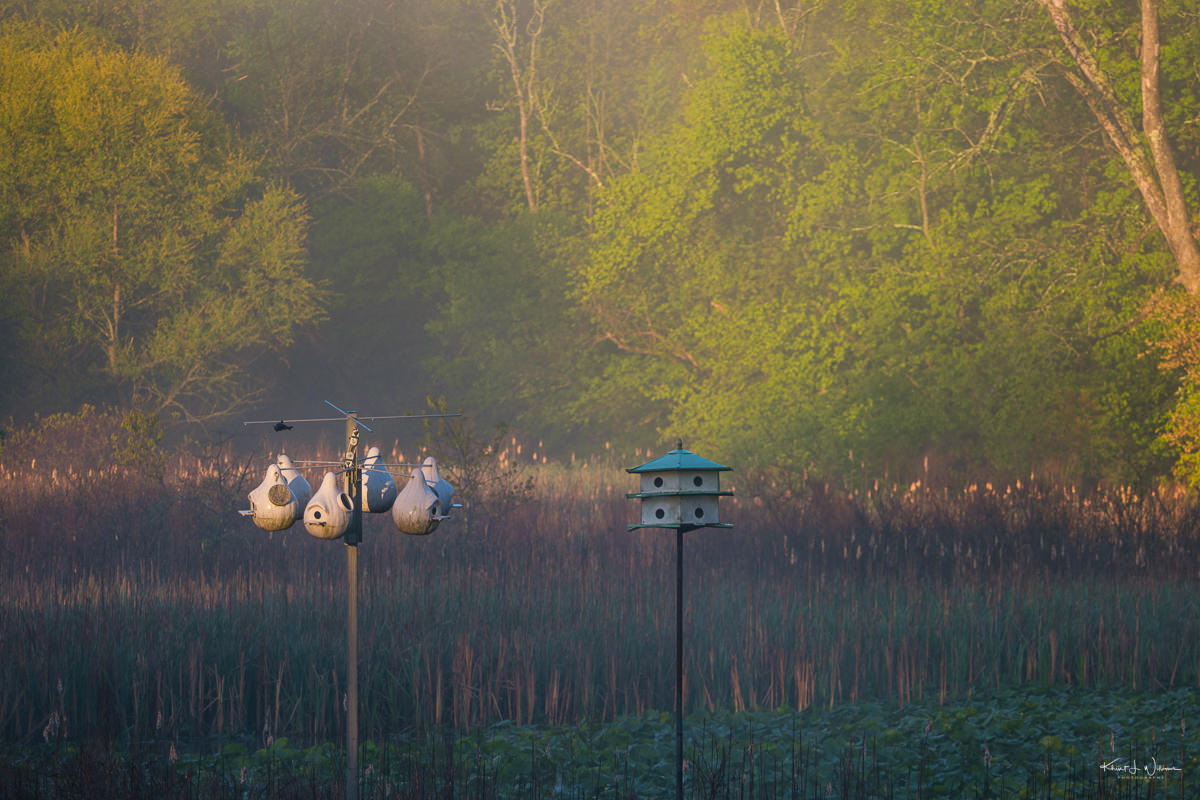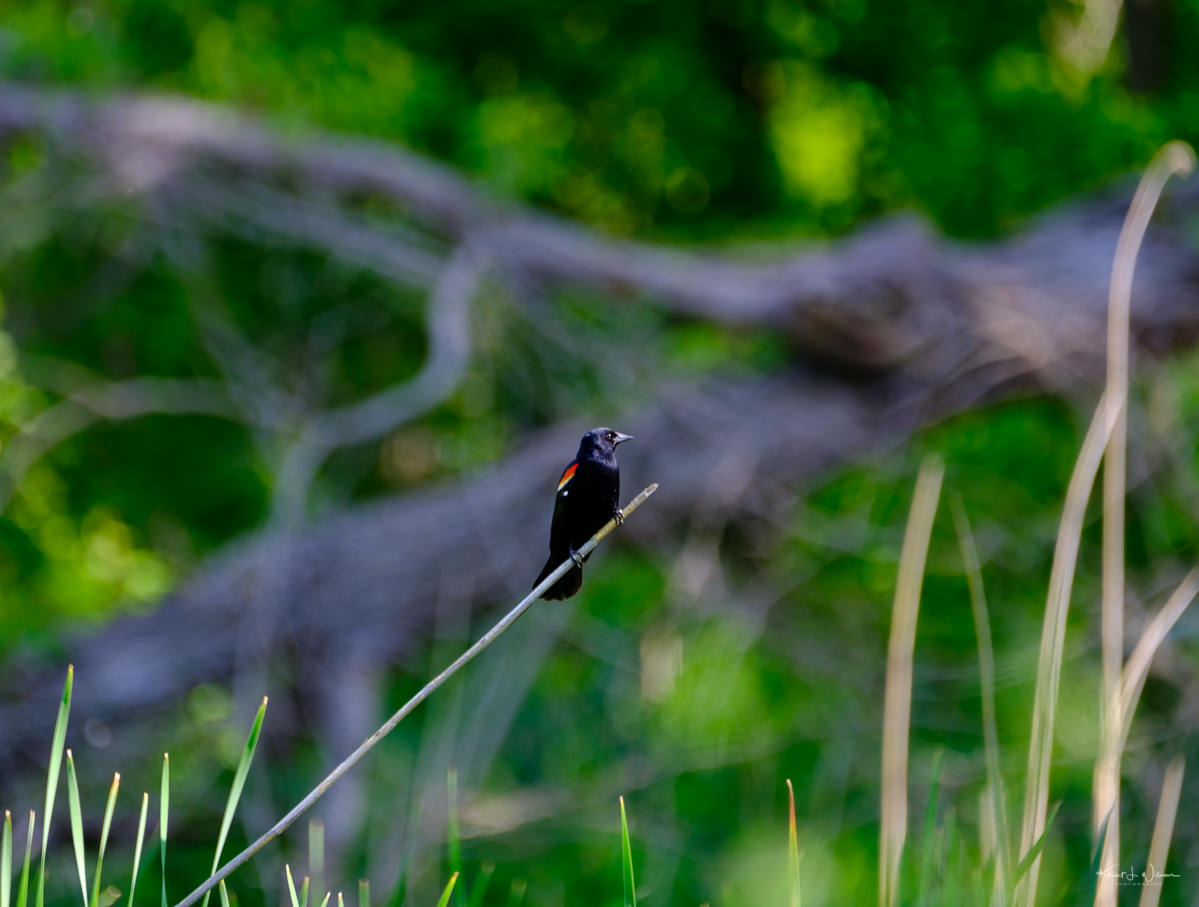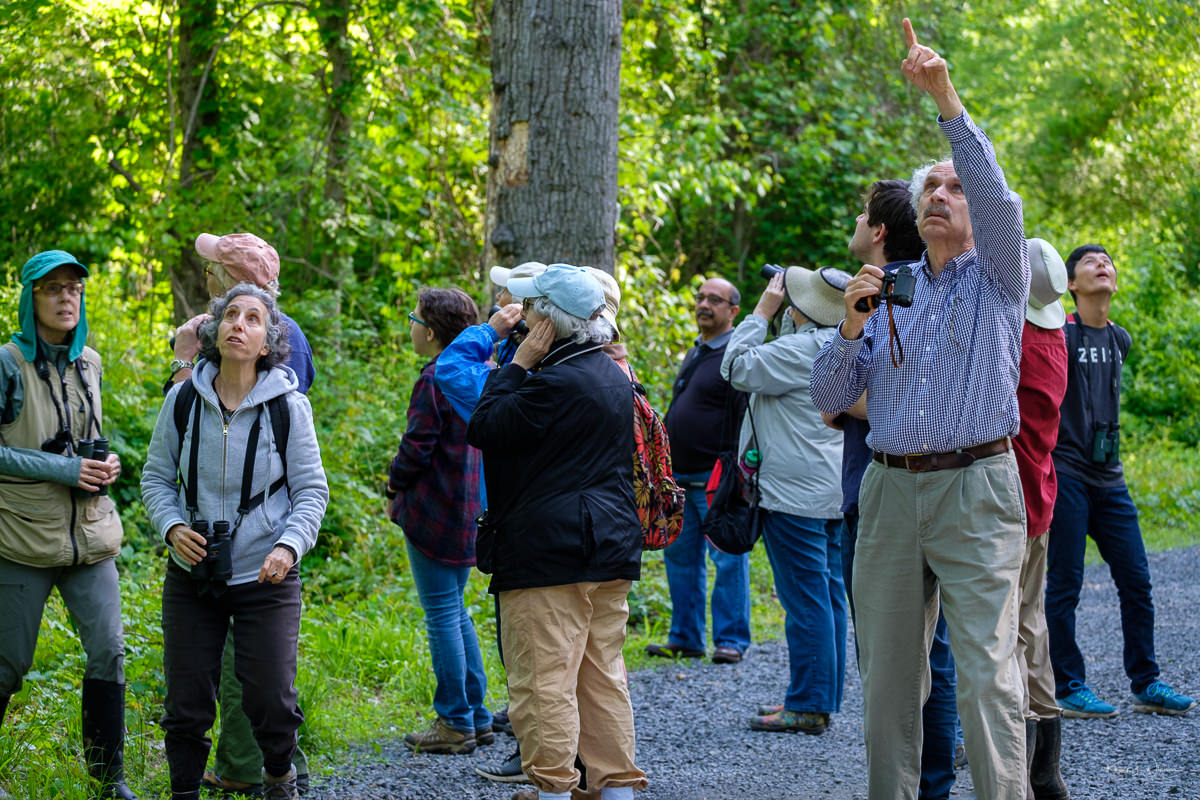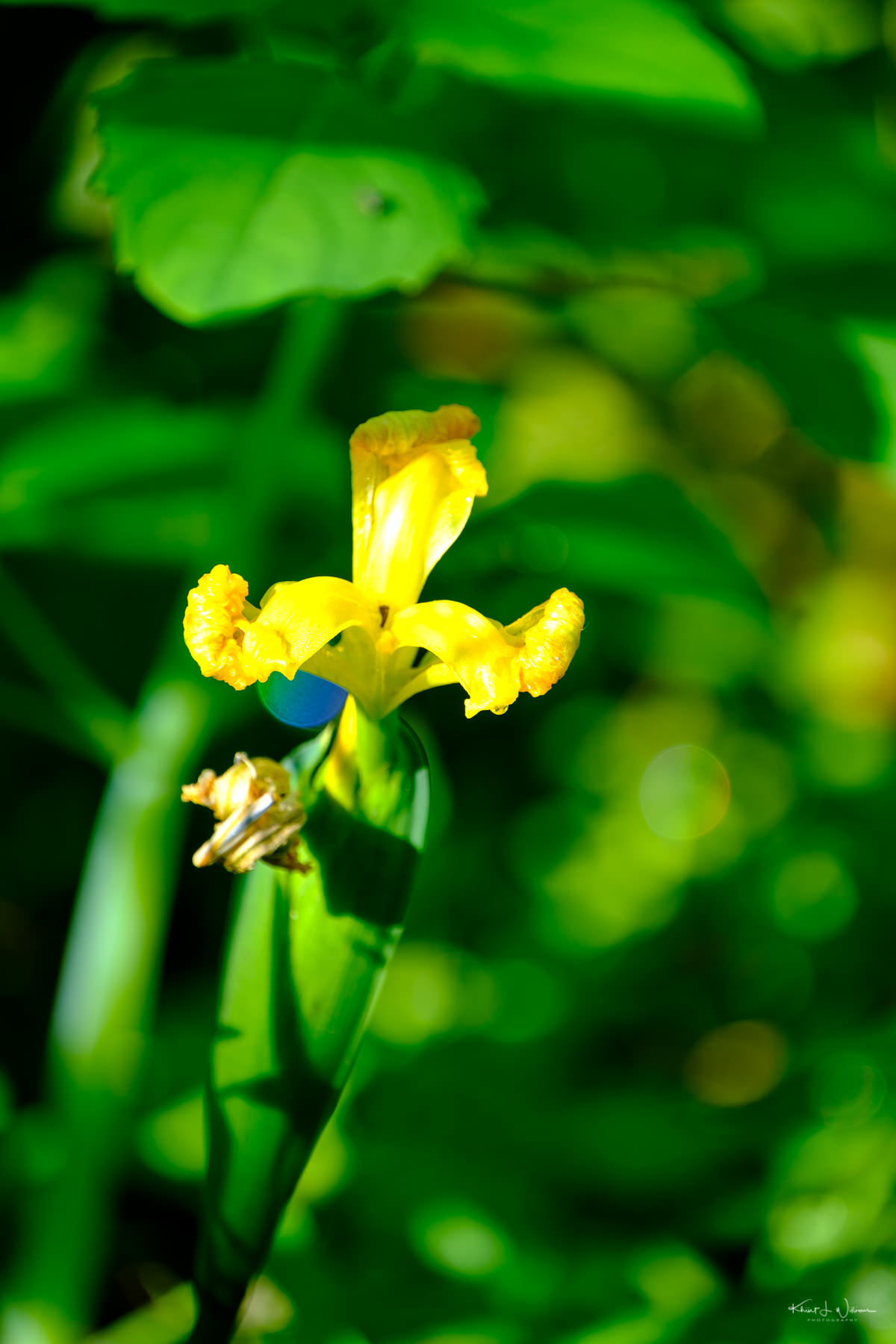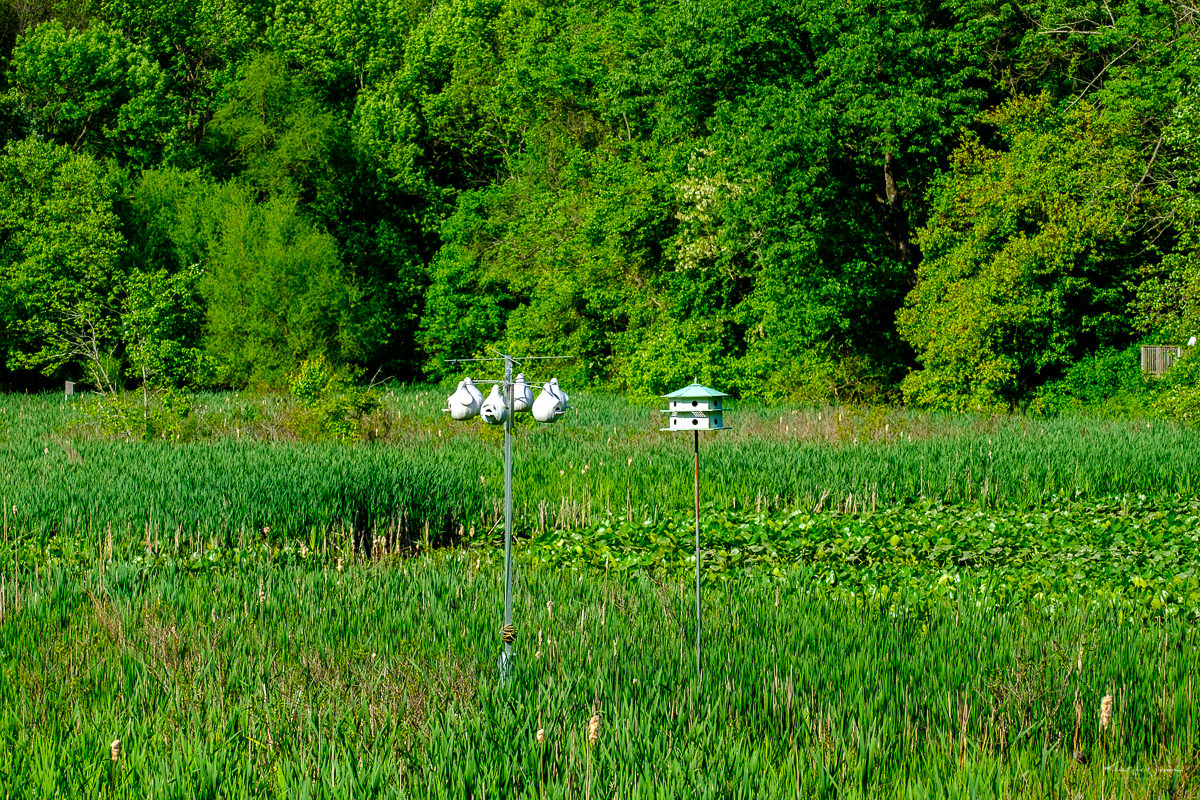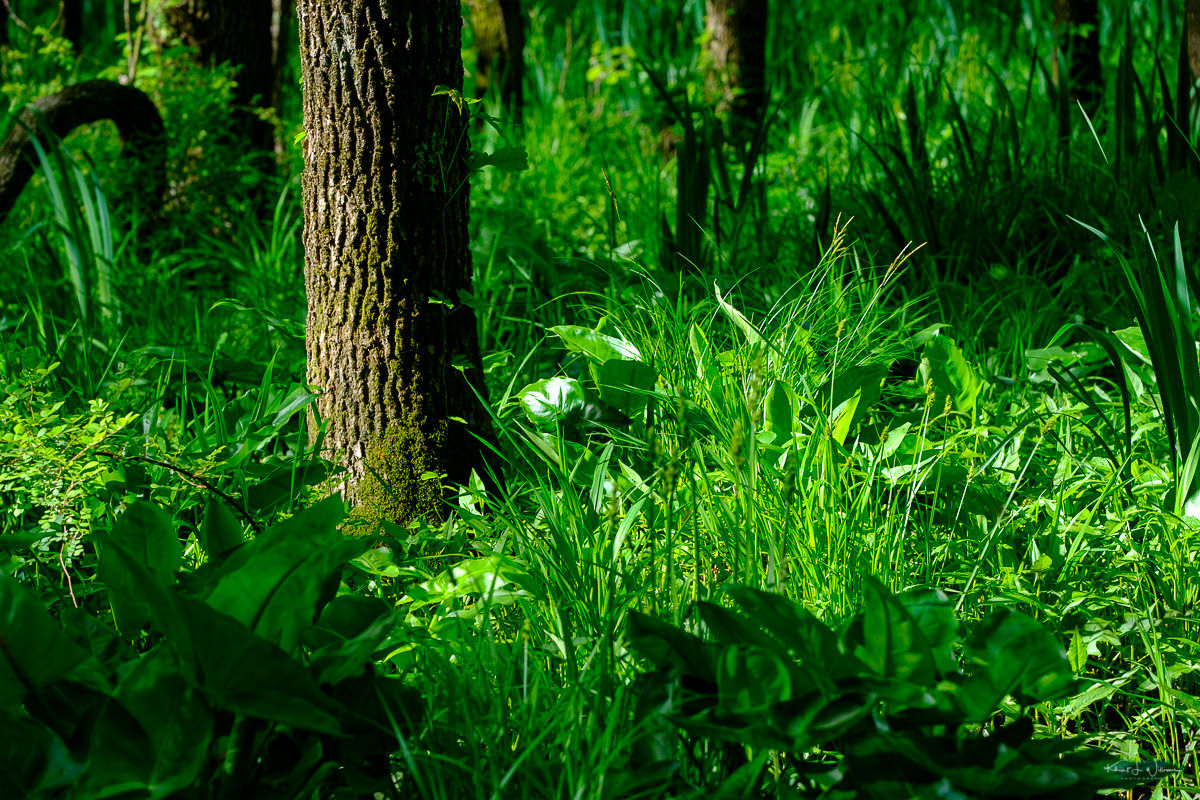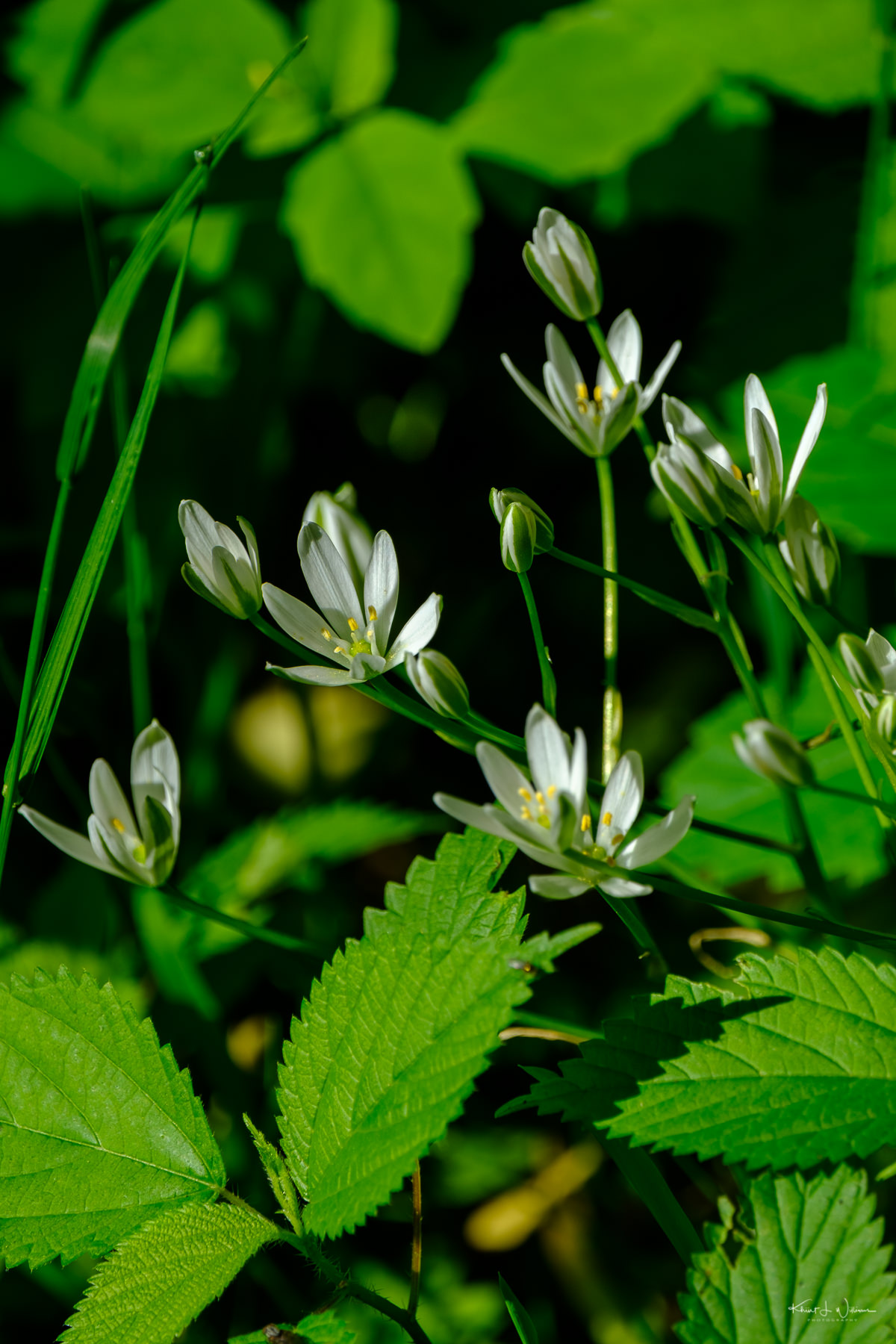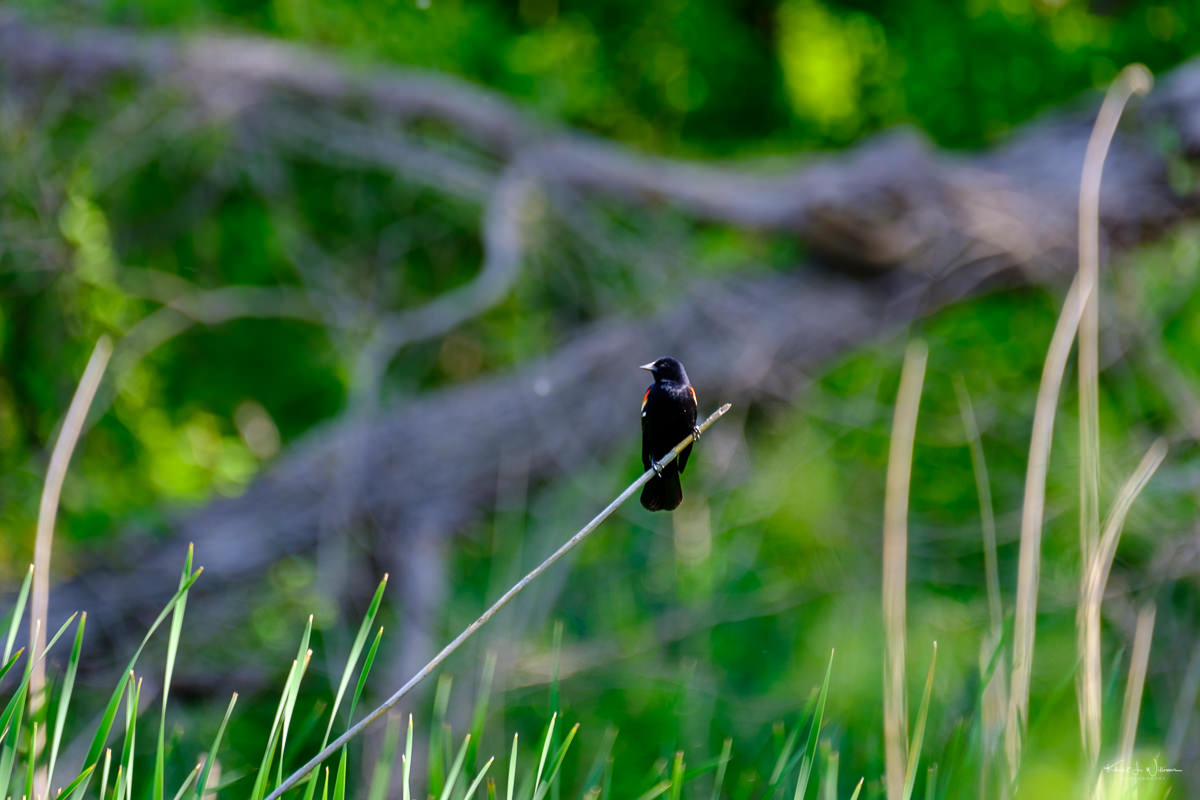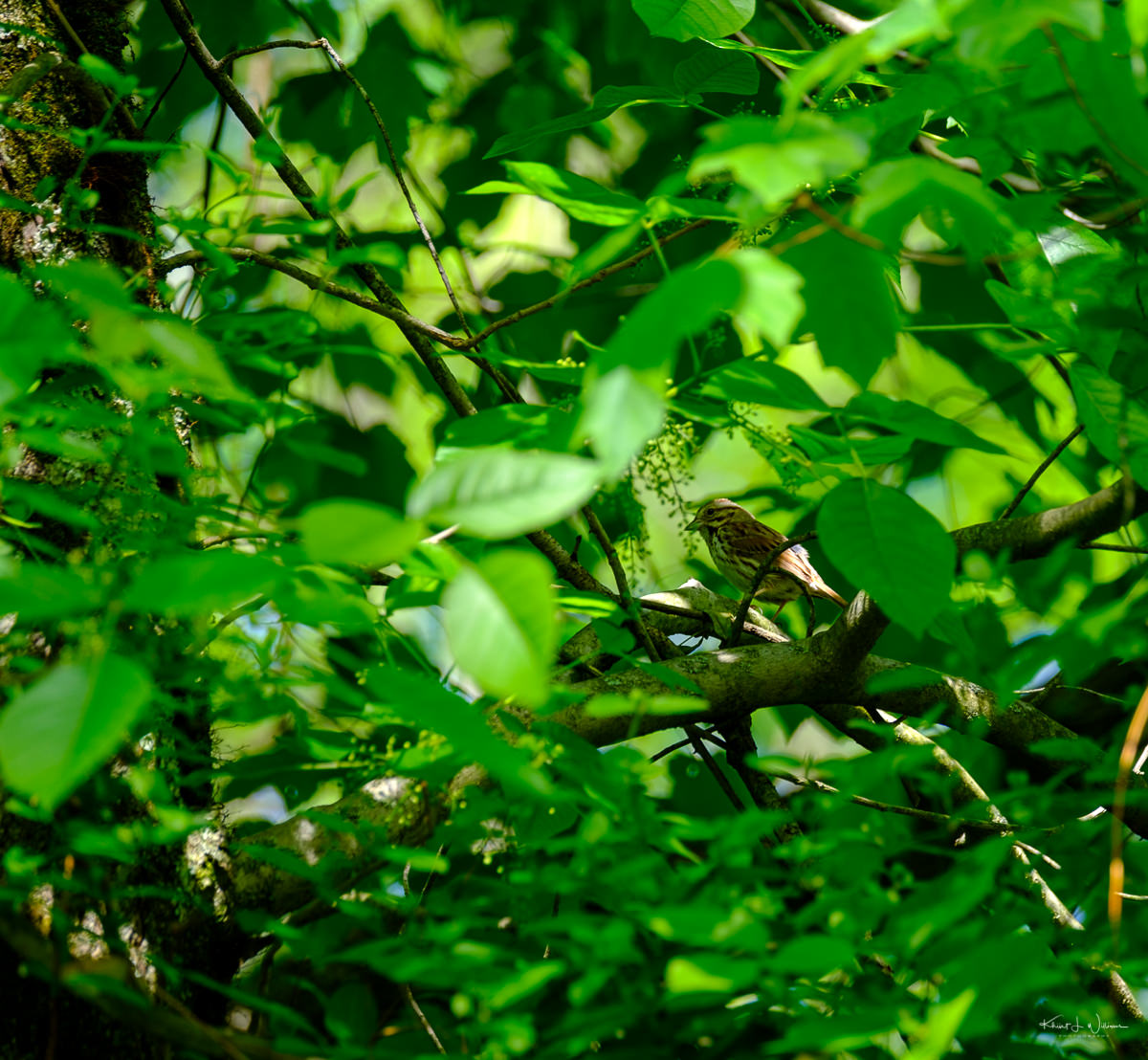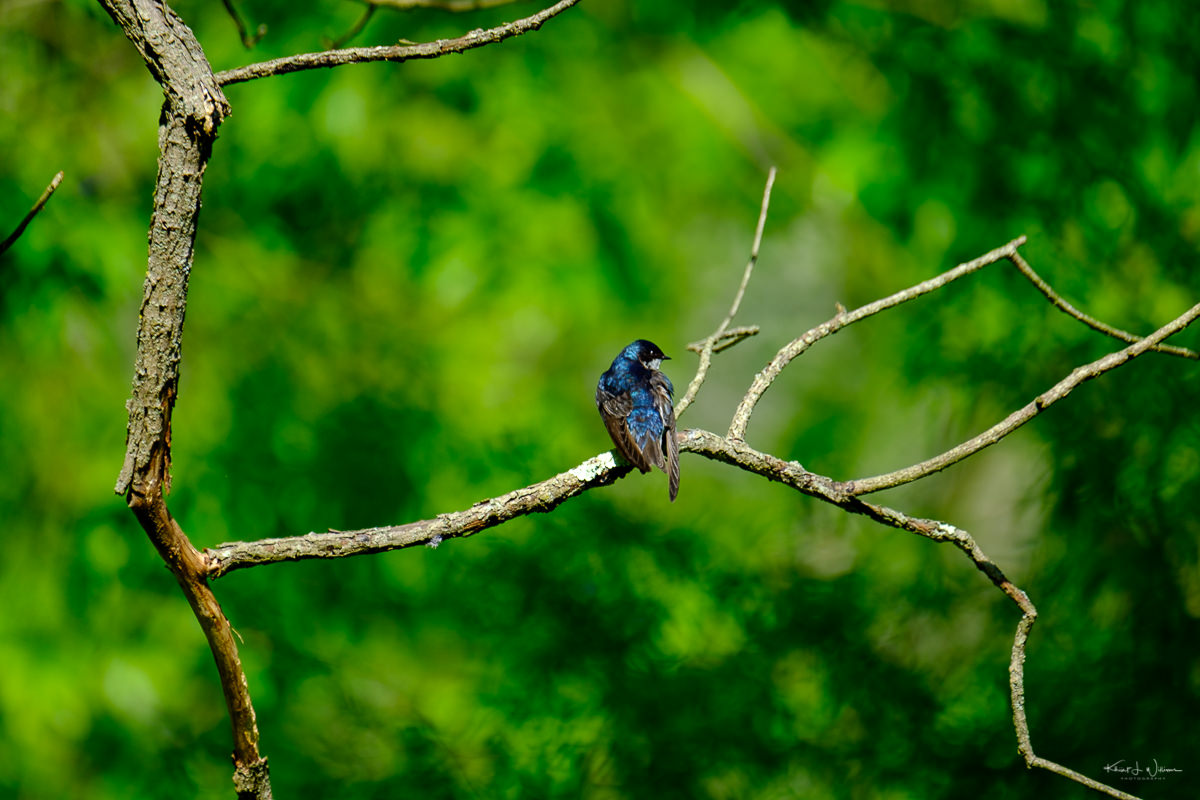I visited the Charles H. Rogers Wildlife Refuge two days after my first adventure to capture more bird photographs. I decided to go early in the morning, hoping that this would increase my chances of spotting more subjects. If I was fortunate enough, I could photograph a warbler.
As I went up the platform, fog engulfed the swamp, making it hard to see. It was a chilly morning, and I could feel the dampness, but I was excited. Despite the fog, I could hear the sounds of the birds chirping and singing in the distance. The misty air gave the refuge a mystical and ethereal quality.
As I continued waiting, I saw various birds but could not identify many of them. The refuge was alive with activity, and I felt grateful to witness the beauty of nature up close. The fog cleared as the sun rose higher, revealing the swamp.

I am unsure, but the bird sitting among the bright green leaves in the small tree is a Song Sparrow. Even at 600mm (900mm full frame equivalent), I could not fill the frame with the bird. I looked it up and learned that the Song Sparrow, scientifically known as Melospiza melodia, is a small passerine (perching) bird that belongs to the family Passerellidae. It is a widespread and well-known bird species found throughout North America, from Alaska and Canada to Mexico and parts of Central America.
The Song Sparrow is known for its melodious and varied song, a delightful mixture of trills, buzzes, and sweet notes. Each male Song Sparrow has its unique song, which they use primarily for territorial defence and attracting mates during the breeding season. The song can vary regionally, allowing for localised dialects within the species.
Song Sparrows have plump and rounded bodies with a length of about 5 to 7 inches (13 to 18 centimetres). Their rich brown feathers, streaks, and darker patterns provide effective camouflage within their natural habitats. The bird's features include a greyish-white breast with a prominent dark spot in the centre, a distinctive facial pattern with brown stripes extending from the eye, and a short, conical bill.
These sparrows are highly adaptable and can be found in many habitats, including fields, meadows, marshes, brushy areas, and even suburban gardens. They are particularly fond of areas near water, such as streams and wetlands. Song Sparrows are omnivorous, with their diet consisting of seeds, berries, insects, and small invertebrates.
During the breeding season, male Song Sparrows establish territories and engage in elaborate courtship displays to attract females. The males perch on prominent branches or shrubs, singing their distinctive songs while engaging in visual displays like fluttering wings and raised tail feathers.
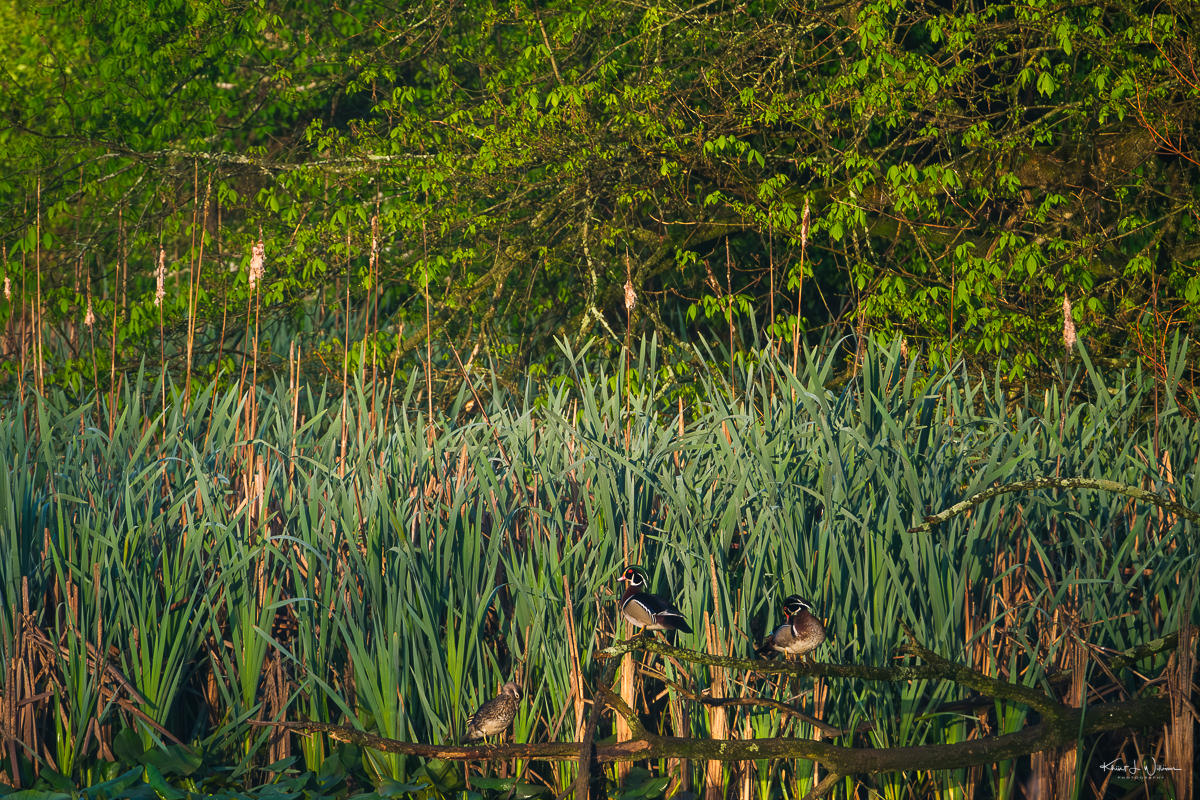
I spotted ducks splashing in the water in the swamp's far right corner. I swung my XF150-600mmF5.6-8 R LM OIS WR around to photograph them, only noticing the wood ducks sitting on the fallen tree trunk after clicking the shutter a few times. I later learned that wood ducks, scientifically known as Aix sponsa, are strikingly waterfowl in North America. They are medium-sized ducks known for their vibrant and intricate plumage, making them one of the most visually appealing species of ducks. The male Wood Duck boasts an elaborate combination of colours, with a glossy green crest on its head, a white patch around its neck, chestnut sides, and intricate patterns on its wings. In contrast, the female Wood Duck is more subtly coloured, featuring greyish-brown plumage with delicate patterns.
Wood Ducks are highly adapted to nesting in tree cavities near water bodies such as wetlands, ponds, and wooded swamps. They are exceptional tree climbers, using their sharp claws to grip onto branches and tree trunks. This unique behaviour sets them apart from most other duck species. Wood Ducks are primarily herbivorous, feeding on various plant matter, including seeds, fruits, leaves, insects, and aquatic invertebrates. They are known to forage in shallow waters, often dabbling or submerging their heads to search for food.
Conservation efforts have played a crucial role in recovering Wood Duck populations, as they were once greatly threatened due to habitat loss and overhunting.
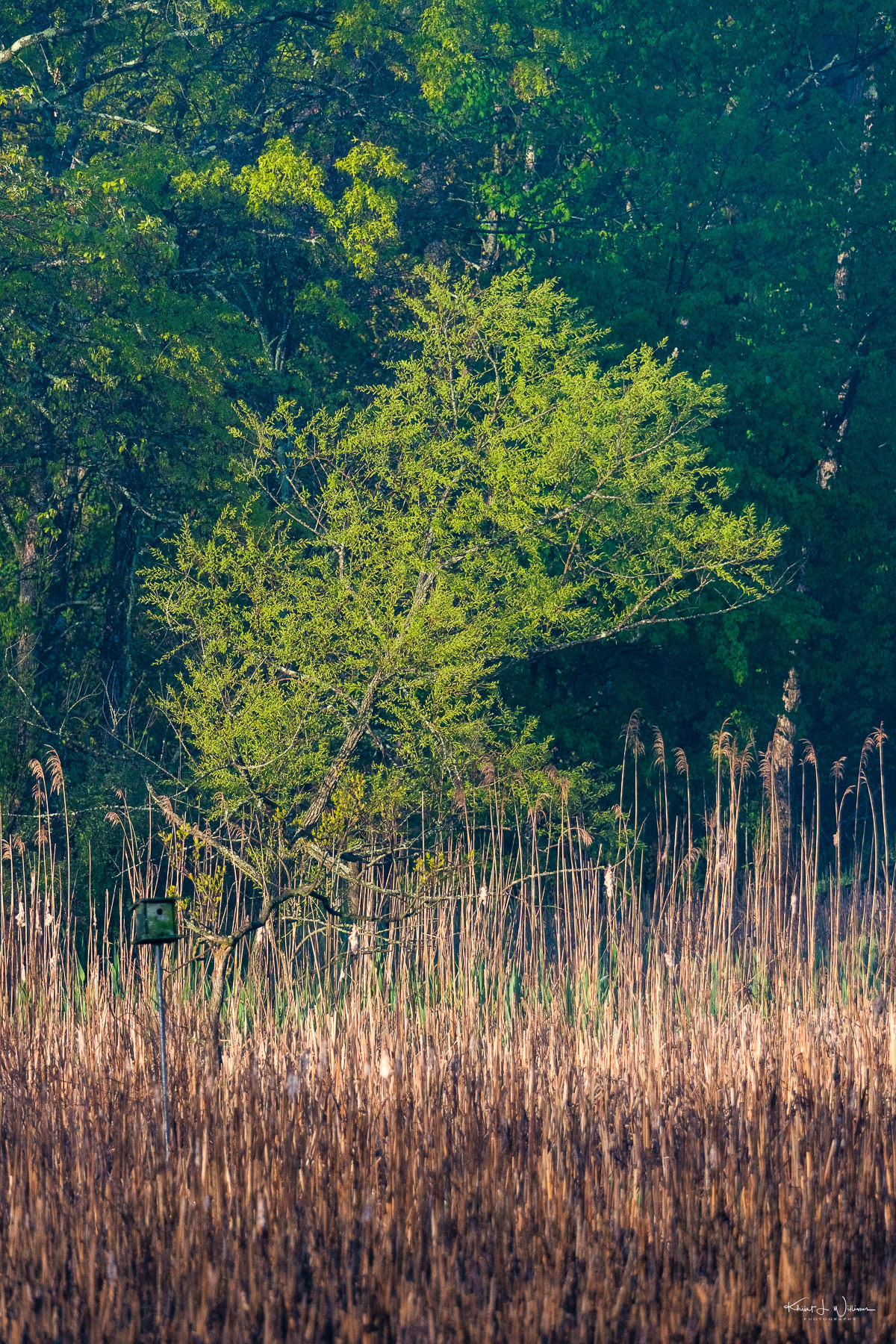
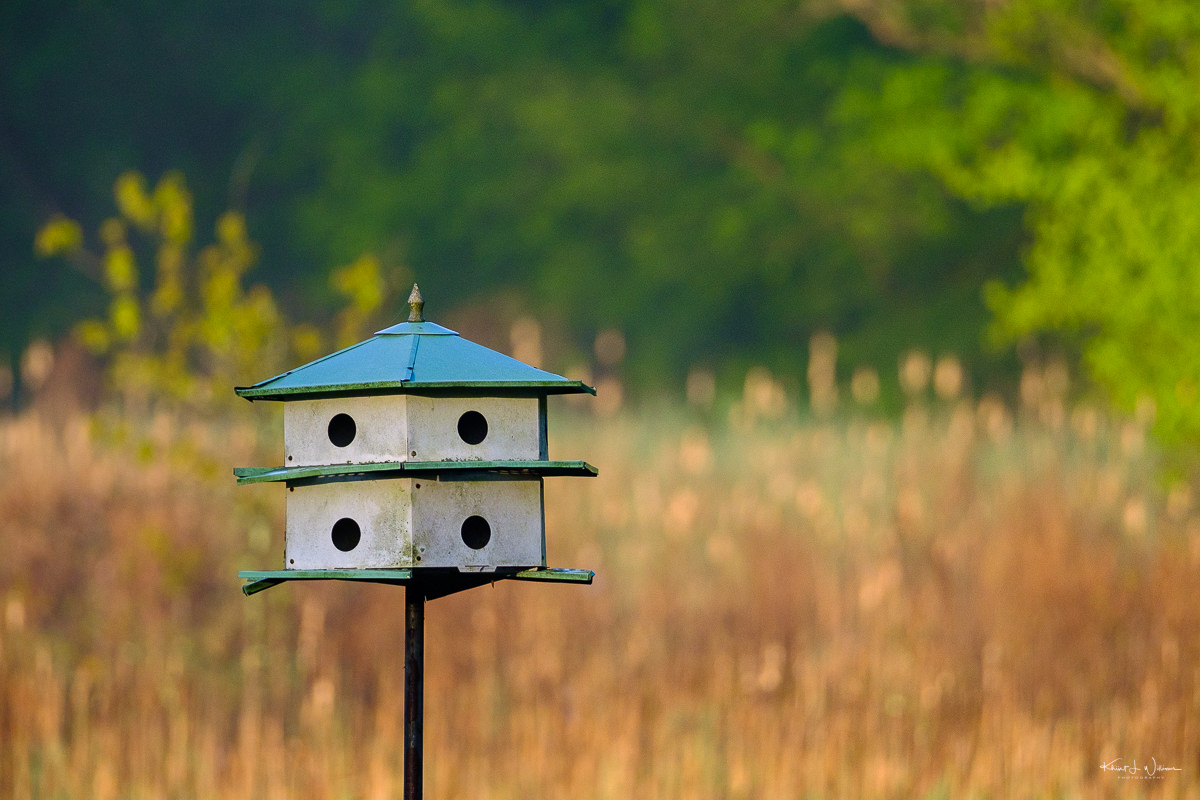
I waited about 90 minutes before calling it quits on the day's expedition. I had hoped to see some warbler, but it may still be too early. I’ll return later in May.
